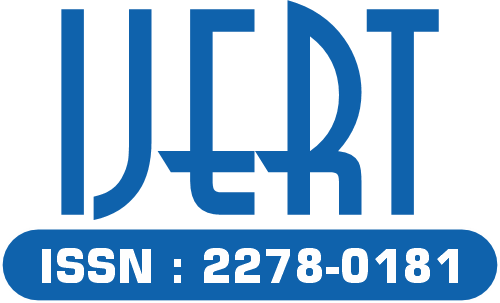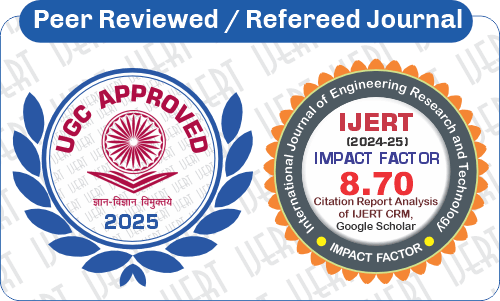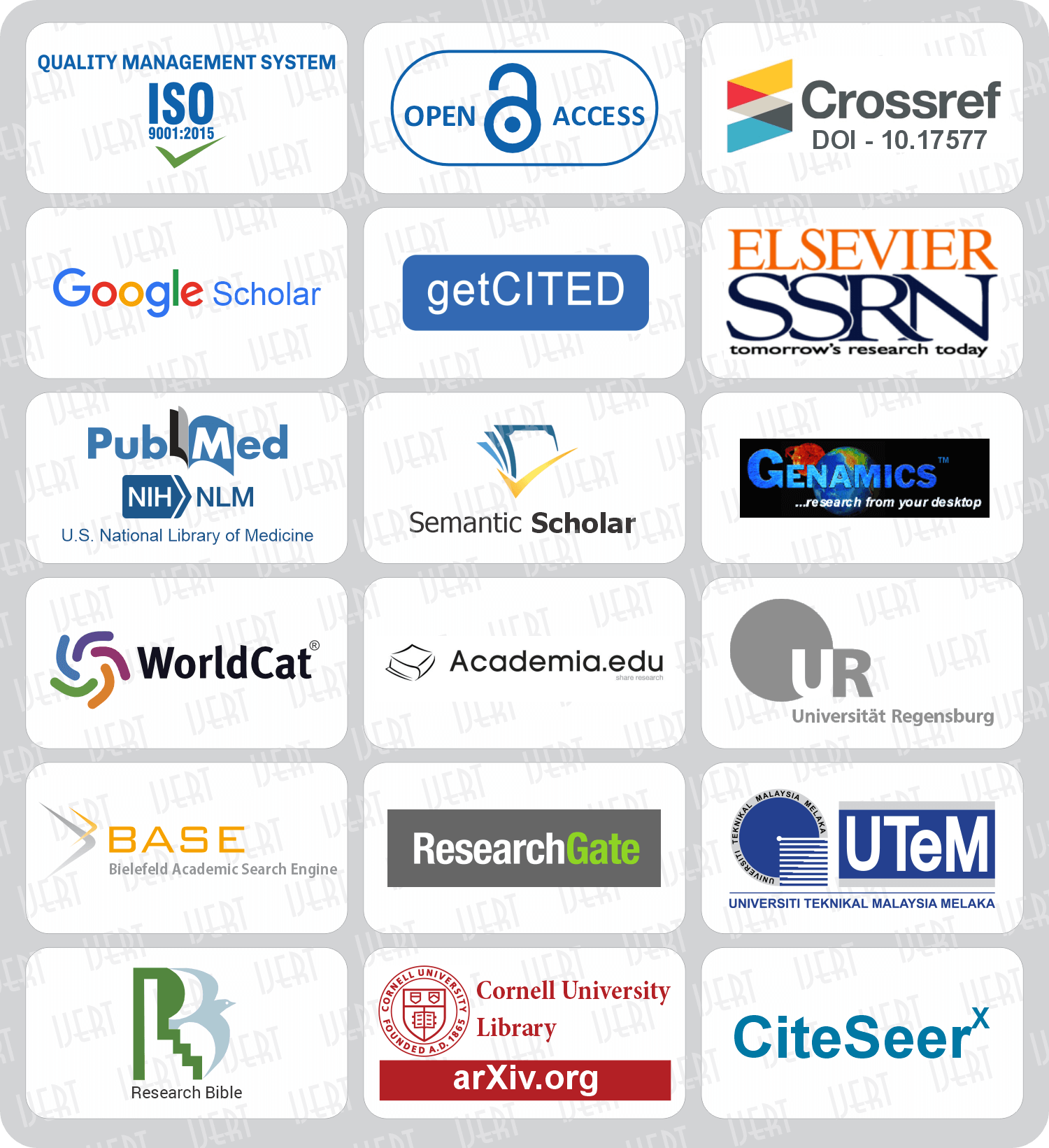 DOI : 10.17577/IJERTV14IS010107
DOI : 10.17577/IJERTV14IS010107

- Open Access

- [post-views]
- Authors : Dr. Priya Charles, Pranav Gaikwad, Pratham Rakshaskar, Deven Marne
- Paper ID : IJERTV14IS010107
- Volume & Issue : Volume 14, Issue 1 (January 2025)
- Published (First Online): 07-02-2025
- ISSN (Online) : 2278-0181
- Publisher Name : IJERT
- License:
 This work is licensed under a Creative Commons Attribution 4.0 International License
This work is licensed under a Creative Commons Attribution 4.0 International License
Web Semantic Information Retrieval Systems
Dr. Priya Charles
Associate Professor
D.Y. Patil International University
Published By
1) Deven Marne (DYPIEMR)
Akurdi, Pune 2) Pranav Gaikwad (DYPIEMR)
3) Pratham Rakshaskar (DYPIEMR)
Abstract This project deals with the construction of a Web Semantic Information Retrieval System which aims at improvement of the precision and relevance of information retrieval by making use of several search engines APIs.
This system is based on the contemporary NLP technologies and is designed to give quick and accurate answers to the queries of the users while using OpenAI LLMs and several search endpoints such as Bing, Serper, DeepSeek etc.
To address issues of concurrent usages of multiple APIs, the system follows a multi-threaded scheme maximizing the efficiency of search operations while minimizing delays. It gathers pieces from knowledge graphs, answer boxes and organic search results to deliver complete and well-rounded answers.
Keywords Semantic Web, Information Retrieval, Ontology- Based Retrieval, Knowledge Graphs, Natural Language Processing, Semantic Search, Contextual Search
I. INTRODUCTION
The rapid growth of web data has necessitated the advancement of IR systems to handle and make sense of a huge amount of unstructured data. Traditional IR systems rely heavily on keyword matching, which often yields results with little relevance. WSIRS represents an innovative shift towards the understanding of meaning and context behind the search queries and content in enhancing search precision and relevance. This review discusses the works available on WSIRS that combine methodologies, thematic insights, and emerging trends into its structure. It is structured in terms of thematic analysis and a discussion of methodologies for comparison, emerging trends, and gaps in the research- a comprehensive review of the current landscape and potential future semantic retrieval systems.
The intent focus in selecting this topic was the increasing need for intelligent information retrieval systems beyond current search engines. Given the enormous amount of information that continues to grow on the Internet, users tend to have difficulty getting the right responses to questions due to poor relevance, too much information without context, as well as lack of context. Our project seeks to solve this problem by developing a system that knows the users queries but responds by citing only the necessary concepts and sources
Literature Review
A lot of previous research and studies have been carried out by different researchers exploring the problem of students dropping out of colleges, we review some of them in this section laying the groundwork for us to build upon and implement a solution for our institution.
Literature review
Ontology-Based Retrieval: Ontologies provide structured knowledge representations, enhancing query relevance by understanding relationships between entities and concepts, particularly in fields like biomedical research and e-commerce energy applications. Sky imaging involves capturing images of the sky using ground-based cameras or satellite sensors Advances in deep learning, particularly with transformers and large language models like GPT and BERT, have significantly enhanced semantic understanding in Web Semantic Information Retrieval Systems (WSIRS). These models enable systems to interpret queries in natural, human- like terms, improving retrieval accuracy and relevance
Natural Language Processing (NLP) andSemantic Search: NLP t Natural Language Processing (NLP) and Semantic Search: NLP techniques, such as namedentity recognition (NER) and part-of-speech (POS) tagging, are combined with semantic retrieval to interpret the intent and context behind natural language queries, improving user experience.
Knowledge Graphs and Semantic Networks: Knowledge graphs, like Google's, map entity relationships, allowing retrieval systems to draw insights from data connections to answer user queriesmore accurately.
Semantic Web & Ontologies:
-
Ontologies are frameworks that represent structured data, enabling machines to interpret and process information more
-
Semantic IR systems utilize ontologies to improve search accuracy by understanding the contextual meaning of search terms.
-
Contemporary Ontology-based Techniques:
-
The paper explores several ontology-based techniques used for text, multimedia, and cross-lingual information retrieval.
-
Text-based IR: Uses ontologies to match queries with relevant documents by understanding the semantic context.
-
Multimedia IR: Applies semantic features to retrieve audio, video, and image content, addressing challenges in non- textual data retrieval.
-
Cross-lingual IR: Focuses on retrieving information across different languages using semantic translation and matching techniques.
-
-
Applications of Ontologies in IR:
-
uery Expansion: Enhancing user queries with semantically related terms to improve search results.
-
Term Disambiguation: Resolving ambiguity by identifying the correct meaning of words based on
-
Document Classification: Categorizing content using ontology concepts to refine search outcomes.
-
Enhanced IR Models: Integrating ontologies with existing IR models to boost performance, particularly in domain-specific searches like biomedical or legal information retrieval.
-
4 Challenges & Future Directions:
-
The paper highlights limitations such as the lack comprehensive semantic datasets, challenges in multimedia content retrieval, and insufficient resources for cross-lingual IR.
-
Future research should focus on automated ontology learning, real-time semantic data extraction, and improving translation tools for cross-lingual search.
Ontology-based information retrieval significantly enhances search efficiency by using semantic understanding rather than traditional keyword matching. This approach is crucial for handling the increasing complexity and volume of web data. The paper emphasizes ongoing improvements and future research in semantic IR, particularly in the areas of multimedia and multilingual data processing.
Keywords
-
Web Information Retrieval
-
Ontology
-
Semantics
-
Multimedia Information Retrieval
The research paper titled "Empowering Information Retrieval in Semantic Web" explores advancements in semantic web technologies and their applications for improving information retrieval (IR). Here is a condensed summary of its main points:[2]
-
The evolution of the web from Web 1.0 (static content) to Web 4.0 (intelligent agents) has transformed information retrieval. Web 3.0, also known as the Semantic Web, focuses on enabling machines to understand and process data by adding semantic meaning to web content.
-
The paper presents a framework that leverages ontologies, the Web Ontology Language (OWL), and an intelligent agent algorithm to enhance IR capabilities, theeby making information retrieval more efficient and context aware.
Key Concepts and Techniques
-
Semantic Web Technology:
-
Semantic web uses technologies like RDF (Resource Description Framework) and OWL to structure data in a machine-readable format.
-
These technologies enable systems to understand user queries beyond simple keyword matching, providing more accurate and relevant results.
-
-
Ontology-Based Information Retrieval:
-
Ontologies define relationships between concepts, which helps in improving the accuracy of search results by
-
The research discusses the use of ontologies to overcome limitations in traditional keyword-based search engines, which often return irrelevant results due to lack of context.
-
-
Intelligent Agent Algorithm (IAA):
-
The paper introduces an Intelligent Agent Algorithm (IAA) that enhances knowledge representation on the semantic web. IAA processes user queries by categorizing them into two types:
-
Decision Representation (DR): ueries focused on getting
specific answers (e.g., "What is the price of…?").
-
Suggestion Representation (SR): ueries aimed at getting
recommendations (e.g., "I am looking for…").
-
-
The algorithm helps in distinguishing between immediate informational needs and exploratory, future-oriented queries.
-
-
Applications and Case Studies:
-
Examples are provided to demonstrate how IAA can interpret user queries to deliver precise results. For instance, searching for a DVD within a certain budget and delivery timeframe yields specific product listings with tailored recommendations.
-
-
Comparative Analysis:
-
The paper compares traditional search engines with semantic-based approaches, highlighting the improvements in precision
-
through semantic technologies. It showcases the limitations of current systems, such as their inability to fully comprehend user intent.
-
The research emphasizes ongoing challenges in implementing semantic web technologies, including the need for better data processing, query understanding, and handling diverse data formats.
-
Future work suggests refining the IAA to improve its adaptability and efficiency, as well as expanding its applications to broader
-
The integration of semantic technologies, ontologies, and intelligent algorithms can significantly enhance the effectiveness of information retrieval systems.
-
The proposed framework aims to bridge the gap between user intent and search results by leveraging the capabilities of the semantic web, thus moving beyond traditional keyword-based searches.
Keywords
-
Semantic Web
-
Information Retrieval
-
Ontology
-
Intelligent Agent Algorithm
The research paper titled "Information Retrieval with Semantic Annotation" focuses on improving the process of retrieving relevant information from the web using semantic technologies. Here's a condensed summary of the main points.[3]
-
The exponential growth of web content has led to challenges in finding high-quality, relevant information. Traditional search engines often struggle to meet user needs due to information overload and lack of context understanding.
-
This research proposes a model that uses semantic annotation to enhance information retrieval systems (IRS). The model includes three main components: Crawling- Indexing, Processing, and Presentation.
-
The goal is to help users retrieve the most relevant information by understanding their search intent and adjusting results according to the context.
Key Components of the Proposed Model
-
Crawling and Indexing:
-
This component identifies available websites and extracts information for indexing. It uses crawlers to explore the web and retrieve metadata like URLs, content
summaries, keywords, and links.
-
Semantic annotation is applied to the collected data using tools like Apache Jena and Solr, which process the content to enhance its retrievability.
-
-
Information Processing:
-
This stage involves natural language processing (NLP) techniques to interpret user queries. The system uses ontologies
(structured knowledge representations) to understand and disambiguate terms in user queries[7].
-
It generates semantic representations of the users input,
turning it into RDF
(Resource Description Framework) triplets to improve the matching process.
-
The user profile is considered to personalize results based on previous searches, preferences, and location.[8]
-
-
Presentation:
-
The system interface allows users to perform simple and advanced searches. Results are sorted based on relevance determined through algorithms like Levenshtein distance and cosine similarity.
-
Advanced search features include filters like any of the words, all the words, exact phrase, and domain- specific searches.
-
The focus is on providing a user-friendly experience with personalized and contextually accurate results.
-
-
The model was validated using precision and exhaustiveness (recall) metrics. An experiment compared the performance of traditional IRS with the proposed semantic annotation-based model.
-
Results showed that the proposed model achieved a precision and recall rate above 0.8, indicating a significant improvement in the quality of information retrieval.
-
Expert consultations further confirmed the system's effectiveness, demonstrating higher satisfaction with the relevance and accuracy of the results.
-
The study confirms that the integration of semantic annotation significantly enhances the information retrieval process by providing context-aware, relevant results.
-
The proposed system addresses challenges like information overload, heterogeneity of sources, and low visibility of relevant content.
-
Future research could explore expanding the use of semantic technologies in other domains to further improve the efficiency of information retrieval systems.
Keywords
-
Semantic Web
-
Information Retrieval
-
Semantic Annotation
-
Natural Language Processing
The research paper "Agent-Based Personalized Semantic Web Information Retrieval System" presents a multi-agent system for personalized information retrieval, enhancing the relevance of search results by using semantic web technologies. Here is a condensed summary of the paper's key points:[4]
-
Introduction: The study addresses personalized search needs, focusing on tailoring search results based on user preferences and context. Using ontology as a knowledgebase allows semantic analysis of queries, improving accuracy over traditional keyword-based search methods.
-
Personalization through Semantic Web and Agents:
-
Ontology: Helps expand queries by understanding relationships between terms, aligning search results with user intent. b. Intelligent Agents: A multi-agent system performs tasks collaboratively, with agents such as User Agent, Semantic Extraction Agent, and Filtering Agent, which adapt and respond based on user-specific data
-
-
System Architecture (APSIR): The proposed system consists of several components:
-
User Agent: Gathers user preferences and creates a profile based on browsing history.
-
Semantic Extraction Agent: Enhances the query by analyzing semantic
Searching Agent: Retrieves results based on expanded queries, optimizing search relevance.
-
Filtering Agent: Filters retrieved information to align with the users interests. Personalized Ranking Agent: Reranks search results
User Interest Modeling: The system builds and updates a user profile based on explicit (e.g., feedback) and implicit feedback (e.g., browsing behavior). This profile improves retrieval relevance by tracking and adapting to evolving user interests.
The APSIR system provides a more personalized and efficient information retrieval experience by using multi- agent collaboration and user interest modeling, significantly improving the relevance and effectiveness of search results. This paper emphasizes the benefits of integrating semantic analysis and agent-based personalization into information retrieval systems
-
CONCLUSION
This research paper focuses on semantic integration technologies and advanced information retrieval methodologies by targeting the development of a system that maximizes multiple APIs in developing intelligent search capabilities. It used semantic enrichment, natural language processing, and context- aware algorithms to demonstrate proper harmony
The implementation of the system made use of APIs like Bing, Google, Serper, among others for gathering and filtering outputs for search. Through such a multiple facets approach, different aspects were assured so that the multiple possibilities of query resolution could be enhanced. Using AI models that take context into accountfor semantic relationship understanding in terms added richness to the retrieval process. Lastly, the project results demonstrate how this necessaryintegration of semantic analysis with scalable web technologies comes in to respond to more recent challenges such as overflow of information and misinterpretation of context. Some rooms for improvement have been pointed out by this study-the optimization of API integration latency and ontological base expansion for performance in domain-specific terms.
-
REFERENCE
-
-
-
Venkatesan, A. (2014). Application of semantic web technology to establish knowledge management and discovery in the life sciences.
-
A. Ali and A. Alourani, An Investigation of Cloud Computing and E- Learning for Educational Advancement. International Journal of Computer Science and Network Security, 21(11), 216-222, 2021.
-
A. Ali, and I. Ahmad, Concept-based information retrievalapproaches on the web: a brief survey. IJAIR, 3(6), 14-18, 2011.
-
A. Ali and I. Ahmad, A Novel Approach for Information Retrieval on the Web. International Journal of Advance and Innovative Research, 1 (6),20- 26, 2012.. Ali, I. Ahmad, Information
-
Retrieval Issues on the World Wide Web. International Journal of Computer Technology and Applications, 2(6), 1951-1955, 2011.
-
A. AlKhunzain, and R. Khan, The Use of M- Learning: A Perspective of
Learners Perceptions on M-Blackboard Learn International Journal(2)



